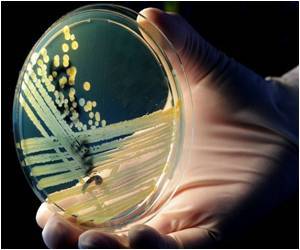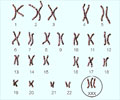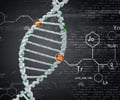To take up residence in two new cells, an E. coli cell while dividing must replicate its circular chromosome and pull the resulting circles apart.

Antibiotics like ciprofloxacin, prescribed for E. coli infections, target topoisomerases, another type of enzyme involved in DNA unlinking. When treated with these drugs, bacterial cells may find other modes of unlinking like the one presented in Vazquez' study, thus giving the cells a chance for survival. Understanding this unlinking process in E. coli, Vazquez noted, "could also lead to the design of better antibacterial drugs, with a clear positive effect on human health."
Infections by pathogenic E. coli and other bacteria pose a high risk to human health. According to the Centers for Disease Control and Prevention, each year in the United States at least 2 million people become infected with bacteria that are resistant to antibiotics. At least 23,000 people die each year as a direct result of these infections. In order to understand bacterial infections, it is essential to study how cells such as E. coli divide.
Biological experiments had given Vazquez and her colleagues some clues as to how the interlinked E. coli chromosomes separate prior to cell division. But the experiments could not provide a clear picture of the steps along the way to separation.
To fill in this picture, the researchers proposed a rigorous mathematical analysis that used the tangle method to model the changes that take place during the separation. In this case, the "tangle" represents two specific sites along the chromosome bound together by the recombination enzymes. They confirmed that the separation takes place in a stepwise fashion. Chromosomes interlinked after replication are converted into knots, then links again, then knots, until two free circles remain.
The researchers mention that further biological experiments can help justify the assumptions in the mathematical model, but acknowledge that those experiments would be extremely challenging to carry out. "In their absence, the mathematical analysis makes a clear-cut advance over previous biological studies," Vazquez said.
Advertisement
"It is important for people to know that DNA is not just a sequence of letters. It is a very long molecule that can adopt a complex three-dimensional structure when packaged inside a cell nucleus," she said. "Every biological process that involves DNA will be affected by its topology, and topological changes can have important biological implications."
Advertisement
Source-Eurekalert












